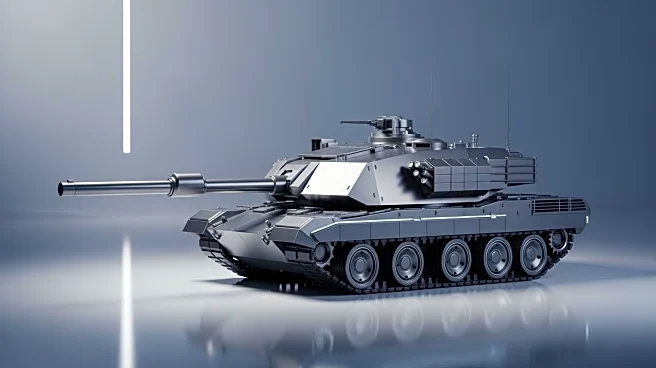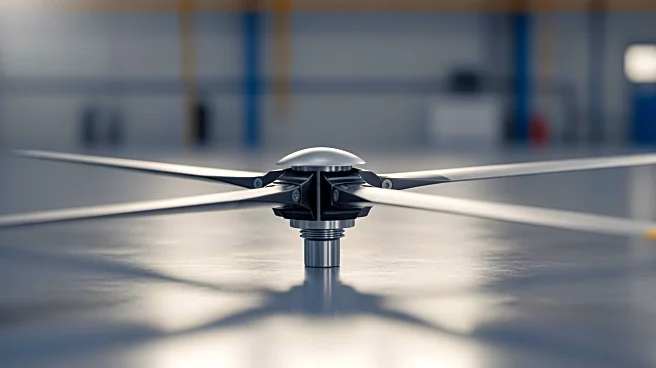What's Happening?
CMI Defence has introduced its latest technological innovation, the Cockerill 3000 Series, at the Eurosatory 2016 event in Europe. This series features a modular turret system that can accommodate a variety
of gun calibers, including automatic guns ranging from 25mm to 50mm and direct fire guns of 90mm and 105mm. The system is designed for versatility, allowing for rapid interchangeability of both crew and armaments, making it suitable for a wide range of military missions such as combat tank operations, bunker and helicopter engagements, and urban combat. The Cockerill 3000 Series also integrates simulation solutions from CMI Defence's Agueris brand, providing training through virtual immersive cockpits and embedded simulators.
Why It's Important?
The introduction of the Cockerill 3000 Series represents a significant advancement in military technology, offering enhanced operational capabilities and cost efficiency. Its modular design allows for flexibility in deployment, catering to various combat scenarios and reducing the need for multiple specialized systems. This innovation positions CMI Defence as a leader in the turret domain, potentially influencing military procurement strategies and defense budgets. The system's success in production in Belgium and France indicates strong market demand, which could lead to increased exports and economic benefits for the regions involved.
What's Next?
As the Cockerill 3000 Series gains traction, it is likely to attract interest from military organizations seeking versatile and cost-effective solutions. Future developments may include further enhancements to the system's capabilities and potential collaborations with other defense contractors. The success of this series could also prompt competitors to innovate similar modular systems, potentially leading to advancements in military technology and strategy.
Beyond the Headlines
The Cockerill 3000 Series' modular approach may influence broader trends in military equipment design, emphasizing adaptability and interoperability. This could lead to a shift in how military forces approach equipment procurement and deployment, prioritizing systems that offer flexibility and reduced logistical complexity. Additionally, the integration of advanced simulation technologies highlights the growing importance of virtual training environments in military preparedness.














